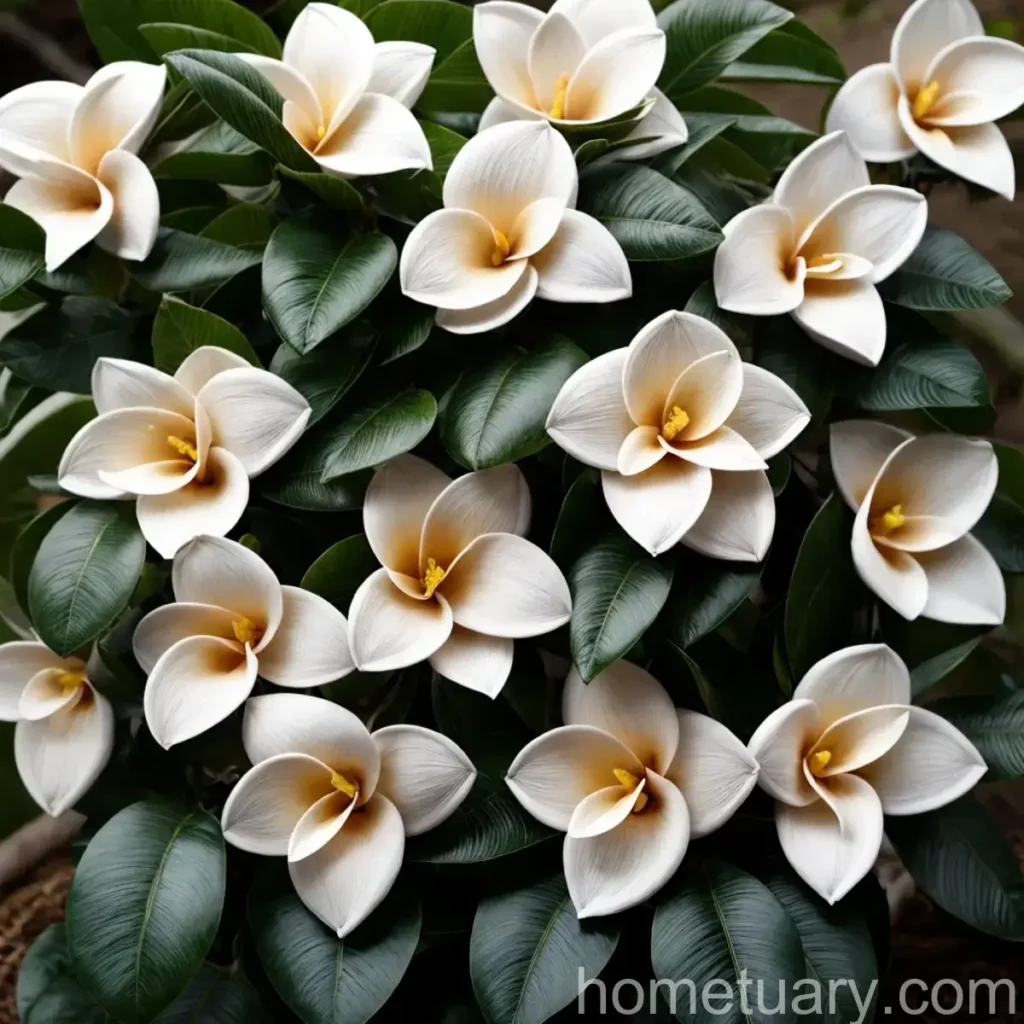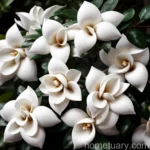Thunberg’s Gardenia (Gardenia thunbergia)
Thunberg’s gardenia (Gardenia thunbergia) is a beautiful, evergreen shrub known for its fragrant white flowers and glossy green foliage. The plant’s delicate blooms and pleasant scent make it a popular choice for gardens, landscapes, and indoor spaces. In this comprehensive guide, we will explore the key aspects of Thunberg’s gardenia, including its culture, uses, care requirements, common diseases, and more.
What is Thunberg’s Gardenia?
Thunberg’s gardenia, scientifically known as Gardenia thunbergia, is a species of flowering plant in the family Rubiaceae. Native to the eastern regions of South Africa, this shrub is prized for its ornamental value and aromatic blossoms. The plant typically grows to a height of 3 to 6 feet, and its dark green leaves provide an attractive backdrop for the striking white flowers.
Key Takeaways
Before delving into the specifics of caring for Thunberg’s gardenia, let’s explore the key takeaways about this captivating plant.
- Scientific Name: Gardenia thunbergia
- Common Name: Thunberg’s gardenia
- Family: Rubiaceae
- Native Habitat: Eastern South Africa
- Growth Habit: Evergreen shrub
- Flower Color: White
- Fragrance: Sweet and aromatic
- Uses: Ornamental, landscaping, and indoor decoration
- Special Features: Glossy green foliage, fragrant flowers
Culture
Thunberg’s gardenia has a rich cultural significance and has been an integral part of various traditions and rituals. In many cultures, the plant’s fragrant blooms are associated with purity, love, and spirituality. Moreover, the striking appearance of the flowers has made them popular choices for decorative arrangements and garlands in ceremonies and celebrations.
Uses
The uses of Thunberg’s gardenia extend beyond its ornamental value. The plant’s flowers are often utilized in the production of perfumes, essential oils, and aromatic blends. Additionally, the bright white blossoms are frequently incorporated into flower arrangements and bouquets, adding a touch of elegance and charm.
Care Requirements
To ensure the optimal growth and health of Thunberg’s gardenia, it is essential to provide the plant with appropriate care, including considerations for water, sunlight, fertilizer, soil, pruning, propagation, and container gardening.
Water
Proper watering is crucial for maintaining the well-being of Thunberg’s gardenia. The plant prefers consistently moist, well-draining soil. However, it is essential to avoid waterlogging, as excessive moisture can lead to root rot and other issues. During periods of active growth and flowering, regular watering is necessary to support the plant’s vitality.
Sunlight
Thunberg’s gardenia thrives in bright, indirect light. While the plant benefits from exposure to sunlight, it is essential to shield it from direct afternoon sun, as intense light can scorch the leaves and affect the overall health of the plant.
Fertilizer
Fertilization plays a crucial role in promoting the growth and blooming of Thunberg’s gardenia. A balanced, acidic fertilizer specifically formulated for acid-loving plants is recommended. It is advisable to feed the plant during the growing season, following the manufacturer’s instructions for application and frequency.
Soil
The soil requirements for Thunberg’s gardenia are specific, as the plant thrives in acidic, well-draining soil. A rich, organic potting mix designed for acid-loving plants is ideal for cultivating optimal growing conditions for the plant.
Pruning
Pruning is essential for shaping the plant and promoting healthy growth. Remove dead or diseased branches, faded flowers, and leggy growth to maintain the plant’s vigor and aesthetic appeal. Pruning should be carried out after the flowering period to encourage new growth and flower bud development.
Propagation
Thunberg’s gardenia can be propagated through various methods, including stem cuttings and air layering. Propagation through stem cuttings is a popular and straightforward technique, where healthy, non-flowering shoots are selected and rooted in a suitable growing medium.
Container Gardening
Thunberg’s gardenia can thrive in containers, making it an excellent choice for patio gardens, balconies, and indoor spaces. When grown in containers, it is essential to select a pot with adequate drainage holes and use a well-draining potting mix. Regular watering and fertilization are crucial for container-grown Thunberg’s gardenia, as they typically require more frequent care compared to plants in the ground.
Popularity
Thunberg’s gardenia has garnered widespread popularity among gardening enthusiasts, landscape designers, and individuals seeking to adorn their indoor spaces with the plant’s enchanting beauty and fragrance. The versatility of the plant, along with its ornamental value, has contributed to its enduring popularity in horticulture and gardening.
Common Diseases
Despite its resilient nature, Thunberg’s gardenia is susceptible to certain diseases that can affect its growth and vitality. Common diseases that may afflict the plant include leaf spot, powdery mildew, and root rot. Prompt identification and appropriate management strategies are essential for mitigating the impact of these diseases on the plant’s health.
Disease Diagnosis
Diagnosing diseases in Thunberg’s gardenia involves careful observation of the plant’s foliage, stems, and overall appearance. Symptoms such as yellowing or browning of leaves, white powdery patches, or wilting may indicate the presence of a disease. Additionally, examining the soil and root system can provide valuable insights into potential issues such as root rot.
Common Pests
Thunberg’s gardenia is vulnerable to attacks from various pests, including whiteflies, aphids, and scale insects. These pests can cause damage to the plant by feeding on its sap, leading to stunted growth, leaf yellowing, and a decline in overall vigor. Implementing preventive measures and using appropriate pest control methods is essential for protecting Thunberg’s gardenia from pest infestations.
Botanist’s Tips
As a plant scientist, I recommend the following tips for growing and caring for Thunberg’s gardenia:
- Adequate Watering: Ensure that the plant’s soil remains consistently moist, without becoming waterlogged, to support healthy growth and flowering.
- Optimal Sunlight: Provide the plant with bright, indirect light, while protecting it from harsh afternoon sun to prevent leaf damage.
- Acidic Soil: Use a well-draining, acidic potting mix to create a suitable growing environment for Thunberg’s gardenia.
- Regular Pruning: Inculcate a regular pruning routine to remove dead or diseased growth and promote new, vigorous growth.
- Monitoring for Pests and Diseases: Regularly inspect the plant for signs of pests and diseases, addressing any issues promptly to prevent damage.
Fun Facts
Thunberg’s gardenia is a captivating plant with several intriguing characteristics and historical significance. Here are a few fun facts about this remarkable species:
- The plant is named after Carl Peter Thunberg, a renowned Swedish botanist known for his contributions to the study of South African flora.
- Thunberg’s gardenia is often associated with love, purity, and spirituality in various cultural traditions, making it a popular choice for ceremonial and decorative purposes.
- The fragrant flowers of the plant have inspired the creation of perfumes, scented oils, and aromatic blends, adding to its allure and appeal.
Links to External Resources
To further enhance your knowledge of Thunberg’s gardenia and its care requirements, I recommend exploring the following external resources:
- Royal Horticultural Society – Gardenia thunbergia
- Missouri Botanical Garden – Growing Gardenias
- University of Florida IFAS Extension – Gardenia Diseases
- American Society for the Prevention of Cruelty to Animals – Toxic and Non-Toxic Plants: Gardenia
Conclusion
Thunberg’s gardenia (Gardenia thunbergia) is a captivating plant that captivates with its fragrant blossoms, glossy foliage, and ornamental value. By understanding and implementing the proper care regimen, including considerations for water, sunlight, soil, and disease management, gardening enthusiasts can cultivate thriving and resplendent Thunberg’s gardenias in various settings, from outdoor landscapes to indoor spaces. With its rich cultural significance, aesthetic appeal, and aromatic allure, Thunberg’s gardenia continues to enchant and inspire plant lovers and horticulturists alike, making it a cherished addition to any botanical collection.















